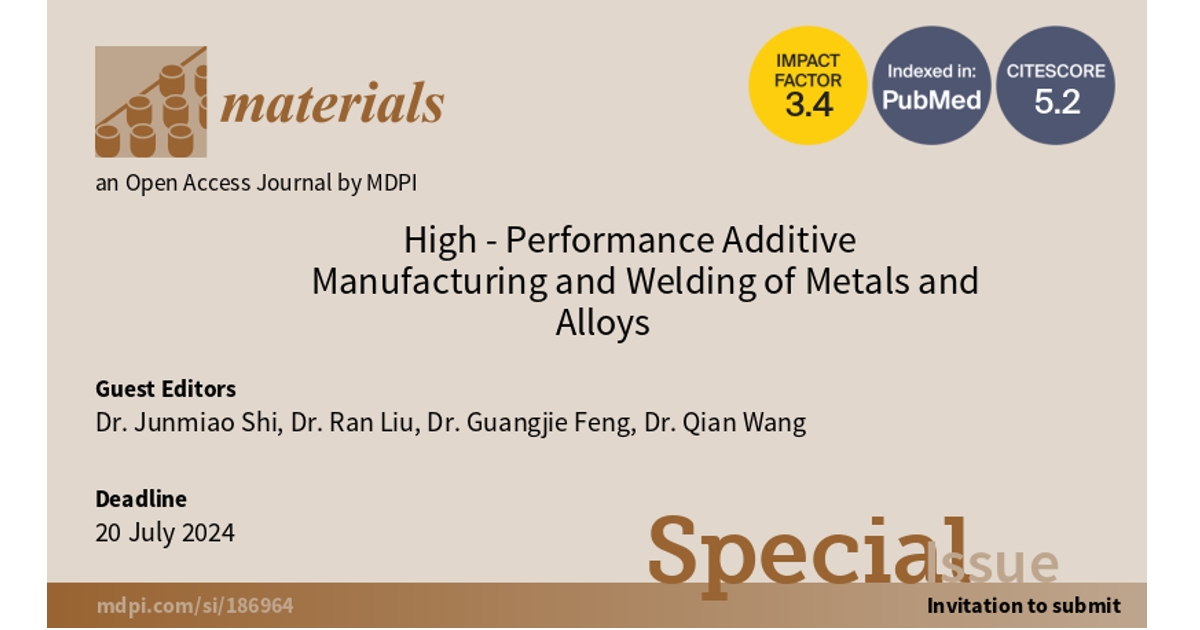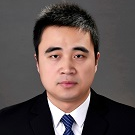High-Performance Additive Manufacturing and Welding of Metals and Alloys
A special issue of Materials (ISSN 1996-1944). This special issue belongs to the section "Metals and Alloys".
Deadline for manuscript submissions: 20 July 2024 | Viewed by 530

Special Issue Editors
Interests: additive manufacturing; welding; microstructural evolution; diffusion bonding; residual stress; fatigue strength
Special Issues, Collections and Topics in MDPI journals
Interests: advanced packaging; copper paste; die attach; pressureless sintering; high-pressure
Interests: material processing; composites; alloys; advanced materials; microstructures; nanomaterials; combustion synthesis
Special Issues, Collections and Topics in MDPI journals
Special Issue Information
Dear Colleagues,
Additive manufacturing (AM) is a key technique driving Industry 4.0. In the era of Industry 4.0, AM/Welding is emerging as a valuable digital technique that offers virtually limitless possibilities for manufacturing (from tools to mass customization) in all industries. To date, AM and welding have been extensively researched. Various fusion-based AM/welding techniques that feature electric arcs, lasers, or electron beams as the heat source to build objects through material melting/solidification have become mainstream. In order to minimize solidification-related problems, in recent years, many solid-state AM/welding techniques (e.g., based on cold spraying or friction processing) have been proposed, attracting great attention from both scientific and industrial communities. Moreover, AM/welding focusing on the metals and alloys is also of great interest.
There is an increasing focus on the research and development of novel die attach materials that exhibit high-temperature reliability and can be specifically tailored to the unique requirements of WBG devices.
This Special Issue will consist of high-quality original research papers related to the following overlapping fields:
- High-performance computing;
- Artificial intelligence, machine learning, and deep learning;
- Microstructure evolution;
- Mechanical properties;
- The measurement and analysis of residual stress;
- Process–microstructure–performance relationships;
- Modeling;
- Additive manufacturing and the welding of high-performance parts;
- The future prospects of additive manufacturing and welding.
- Developing and enhancing the properties of copper pastes;
- Processes for 3D high-density packaging.
Dr. Junmiao Shi
Dr. Ran Liu
Dr. Guangjie Feng
Dr. Qian Wang
Guest Editors
Manuscript Submission Information
Manuscripts should be submitted online at www.mdpi.com by registering and logging in to this website. Once you are registered, click here to go to the submission form. Manuscripts can be submitted until the deadline. All submissions that pass pre-check are peer-reviewed. Accepted papers will be published continuously in the journal (as soon as accepted) and will be listed together on the special issue website. Research articles, review articles as well as short communications are invited. For planned papers, a title and short abstract (about 100 words) can be sent to the Editorial Office for announcement on this website.
Submitted manuscripts should not have been published previously, nor be under consideration for publication elsewhere (except conference proceedings papers). All manuscripts are thoroughly refereed through a single-blind peer-review process. A guide for authors and other relevant information for submission of manuscripts is available on the Instructions for Authors page. Materials is an international peer-reviewed open access semimonthly journal published by MDPI.
Please visit the Instructions for Authors page before submitting a manuscript. The Article Processing Charge (APC) for publication in this open access journal is 2600 CHF (Swiss Francs). Submitted papers should be well formatted and use good English. Authors may use MDPI's English editing service prior to publication or during author revisions.
Keywords
- additive manufacturing
- welding
- arc
- laser
- cold spray
- friction
- brazing
- microstructure
- mechanical property
- residual stress
- modeling
- wide bandgap (WBG)
- advanced packaging
- power device








